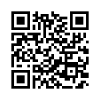THE EFFECT OF TELEVISION PROGRAM ON CHILDREN’S FOREIGN LANGUAGE ACQUISITION
Abstract
(Title: The Effect of Television Program on Children’s Foreign Language Acquisition). Since it was first discovered in the 1920s, television has become an integral part of modern human life. The influence of television programs or programs on children's foreign language acquisition has become an interesting research subject to study. This study aims to determine the effect of television programs on the acquisition of foreign languages in a subject aged two years and three months using a qualitative method where the researcher also acts as an observer. The data obtained is recorded in the form of a diary, and interviews are conducted with parents and the people closest to the subject to obtain accurate data. The results of the study showed that the television programs being watched did not have a significant effect on the acquisition of foreign languages on the subjects studied.
Keywords: Television programs, foreign language acquisition, children
Full Text:
PDFReferences
Anderson, D. R., & Pempek, T. A. (2005). Television and Very Young Children. American Behavioral Scientist, 48(5), 505-522. doi: doi:10.1177/0002764204271506
Cairns, H. S. (2008). Language acquisition research: A peek at the past: A glimpse into the future. In I. A. Sekerina, E. M. Fernández & H. Clahsen (Eds.), Developmental psycholinguistics: On-line methods in children's language processing (Vol. 44). Philadelphia: John Benjamins Publishing.
Cashmore, E. (2002). And there was television: Routledge.
Chomsky, N. (2000). New Horizons in the Study of Language and Mind. New York: Cambridge Univeristy Press.
d'Ydewalle, G., & Van de Poel, M. (1999). Incidental foreign-language acquisition by children watching subtitled television programs. Journal of Psycholinguistic Research, 28(3), 227-244.
Krashen, S. (1981). Second language acquisition. Second Language Learning, 19-39.
Krashen, S. (1982). Principles and practice in second language acquisition.
Kraus, R. M., & Chiu, C.-y. (1997). Language and Social Behavior. In D. Gilbert, S. Fiske & G. Lindsey (Eds.), Handbook of Social Psychology. Boston: McGraw-Hill.
Larsen-Freeman, D., & Long, M. H. (2014). An introduction to second language acquisition research: Routledge.
Linebarger, D. L., & Walker, D. (2005). Infants’ and Toddlers’ Television Viewing and Language Outcomes. American Behavioral Scientist, 48(5), 624-645. doi: doi:10.1177/0002764204271505
Loritz, D. (2002). How the brain evolved language: Oxford University Press.
Männel, C., & Friederici, A. D. (2008). Event-related brain potentials as a window to children’s language processing: From syllables to sentences. In I. A. Sekerina, E. M. Fernández & H. Clahsen (Eds.), Developmental psycholinguistics: On-line methods in children's language processing (Vol. 44). Philadelpia: John Benjamins Publishing.
Media Education. (1999). Pediatrics, 104(2), 341-343.
Sekerina, I. A., Fernández, E. M., & Clahsen, H. (2008). Developmental psycholinguistics: On-line methods in children's language processing (Vol. 44). Philadelpia: John Benjamins Publishing.
Upin dan Ipin. (2012). Retrieved January 16, 2017, from http://lescopaque.com/v10/about.html
Zimmerman, F. J., Christakis, D. A., & Meltzoff, A. N. (2007). Associations between media viewing and language development in children under age 2 years. The Journal of pediatrics, 151(4), 364-368.
DOI: https://doi.org/10.21831/diksi.v27i1.26176
Refbacks
Copyright (c) 2019 Diksi
Jurnal Diksi is published by Faculty of Languages, Arts, and Culture, Universitas Negeri Yogyakarta. It is licensed under a Creative Commons Attribution-ShareAlike 4.0 International License. Based on a work at http://journal.uny.ac.id/index.php/diksi
Our Journal has been Indexed by:
Diksi Journal is published by the Faculty of Languages, Arts, and Culture Universitas Negeri Yogyakarta in collaboration with Himpunan Sarjana Kesusasteraan Indonesia (HISKI)
Supervised by:

2.png)














